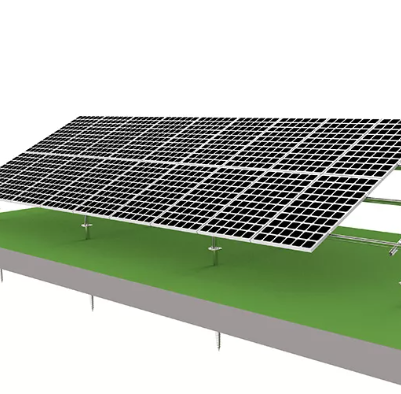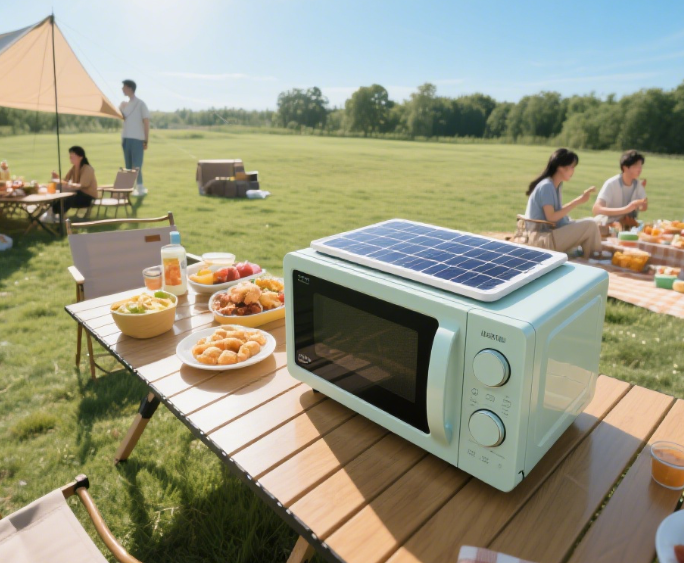


Views: 0 Author: Site Editor Publish Time: 2025-08-26 Origin: Site








Are you choosing the right solar panels for your home or business? Understanding the main performance parameters of solar panels is key to making an informed decision.
In this post, we’ll explore the essential factors like efficiency, peak power, and voltage that determine a solar panel’s effectiveness. You'll learn how these parameters influence your energy production and the lifespan of your panels.

Peak Power (Pmax) refers to the maximum power output a solar panel can produce under standard test conditions. It’s usually measured in watts (W) and is a key indicator of a panel’s ability to generate electricity.
To calculate Pmax, we multiply the voltage at maximum power (Vmp) by the current at maximum power (Imp). For example, if a panel has a Vmp of 30V and Imp of 8A, its Pmax would be 240W.
Several factors can influence Pmax, including temperature and solar irradiance. As the temperature rises, the panel's efficiency can decrease, affecting its peak power output.
Open-Circuit Voltage (Voc) is the maximum voltage a solar panel can produce when there is no current flowing. It is measured in volts (V) and is essential for understanding a panel’s potential.
Voc is influenced by temperature – higher temperatures generally reduce Voc. A panel with a higher Voc can produce more voltage under cooler conditions, making it more efficient in certain environments.
Short-Circuit Current (Isc) measures the maximum current a solar panel produces when its terminals are shorted (no resistance in the circuit). It helps determine how much current a panel can generate under optimal sunlight conditions.
Isc varies based on sunlight intensity and weather. On cloudy days, the Isc may be lower due to reduced sunlight. Isc is vital when designing systems where high current is required, such as in low-voltage applications.
Voltage at Maximum Power (Vmp) and Current at Maximum Power (Imp) are the specific voltage and current values at which the panel operates most efficiently. These values are crucial for ensuring optimal energy generation.
When panels are operating near Vmp and Imp, they generate the most electricity. It’s important to maintain these values during operation for maximum energy production.
The Fill Factor (FF) is a percentage that indicates how “square” the solar panel’s power-voltage (IV) curve is. The higher the FF, the more efficient the panel is at converting sunlight into electricity.
To calculate FF, you multiply Vmp by Imp, then divide that by Voc times Isc. A high FF means better energy conversion. Factors like panel quality and temperature can affect FF.
Solar panel efficiency (η) is the ratio of the electrical output to the total sunlight energy a panel receives. Higher efficiency means the panel can convert more sunlight into usable electricity, which is especially important when space is limited.
Efficiency is typically calculated by dividing the maximum power output (Pmax) by the total solar power input (incident sunlight). Panels made from monocrystalline silicon tend to have higher efficiencies compared to polycrystalline panels. Efficient panels are essential for maximizing energy production, especially in areas with limited roof space.
Solar irradiance is the amount of solar energy that reaches a given area. The intensity of sunlight directly impacts how much energy your solar panels can generate.
Different locations experience varying levels of solar irradiance based on factors like geographical position, time of year, and weather. For example, areas closer to the equator generally receive more direct sunlight and, therefore, higher solar irradiance. This means solar panels in such locations can generate more electricity compared to those placed in areas with lower solar irradiance.
Temperature plays a major role in solar panel performance. As the temperature rises, the panel’s efficiency can drop. This happens because heat causes increased resistance in the panel’s material, reducing its ability to convert sunlight into electricity.
The temperature coefficient of a solar panel measures how much its output decreases as the temperature increases. For example, if a panel has a temperature coefficient of -0.4%/°C, it will lose 0.4% of its efficiency for each degree Celsius above 25°C. In hotter climates, panels with lower temperature coefficients are preferred to minimize efficiency loss.
Even partial shading can drastically reduce a solar panel's performance. When one part of a panel is shaded, the entire system may experience a reduction in energy production. This happens because the electrical current flows through the entire panel, and shaded areas create resistance, affecting the whole system.
To minimize shading effects, try to install panels in open areas free from trees or tall buildings. If shading is unavoidable, consider using optimizers or microinverters that help reduce the impact of shading by allowing each panel to operate independently.
The angle and orientation of your solar panels are crucial for maximizing sunlight absorption. The optimal angle depends on your geographical location, but generally, panels should be tilted to match the latitude of your area.
For optimal performance, solar panels in the Northern Hemisphere should face south, while those in the Southern Hemisphere should face north. Adjusting the tilt to capture more sunlight throughout the year can significantly increase energy production. If possible, use tracking systems that adjust the panels’ angle to follow the sun’s path for even greater efficiency.
To choose the right solar panel, start by estimating how much energy your home or business consumes. You can find this information on your utility bills, usually measured in kilowatt-hours (kWh).
Once you know your energy needs, match them with the panel's power output (Pmax). For example, if your daily energy need is 10 kWh, and each panel produces 300 watts (0.3 kWh) per day, you’ll need about 34 panels to meet your energy needs.
When space is limited, you should prioritize high-efficiency panels. These panels can generate more energy per square meter, making them ideal for smaller rooftops. However, more efficient panels often come at a higher cost.
If you have plenty of space, you might opt for lower-efficiency panels to reduce upfront costs. But, remember, even with a lower-efficiency panel, you still want to ensure it meets your energy demand over time.
Solar panels typically last 25-30 years, but their efficiency does decrease over time. This degradation is usually around 0.5% per year. Over the years, you’ll notice a gradual decline in power output.
Understanding the degradation rate helps you estimate long-term performance. For example, a panel with a degradation rate of 0.5% will still produce around 80% of its original capacity after 25 years, ensuring reliable energy generation for decades.

Solar energy storage systems allow you to store excess energy produced during the day for use at night or on cloudy days. By combining solar panels with a battery storage system, you can ensure a continuous energy supply, even when the sun isn’t shining.
The performance of your solar panels, including peak power and efficiency, directly impacts how much energy can be stored and used. High-efficiency panels with higher peak power can generate more energy, allowing you to store more for later use, maximizing the benefit of your storage system.
To optimize your solar panel system for storage, you need to ensure compatibility between your panels and the battery storage system. The energy generated by your panels should match the battery's capacity and charging requirements.
Peak power plays a crucial role in determining how much energy can be generated and stored. Efficient panels will maximize the available energy, ensuring your storage system can be charged quickly and used efficiently. Make sure your system is designed to handle the full potential of your panels, helping you get the most out of both your solar energy generation and storage.
When choosing solar panels, consider key parameters like peak power, efficiency, and voltage. These factors influence your system’s energy output and overall performance.
For the best results, research and consult professionals to match the right panels with your energy needs. This ensures long-term efficiency and reliability.
A: The most important parameters are peak power (Pmax), efficiency, and open-circuit voltage (Voc), as they directly impact energy output and efficiency.
A: Higher temperatures reduce efficiency, and shading can cause significant energy loss, even partially.
A: Solar panels typically last 25-30 years, with gradual performance degradation over time.
A: Yes, but their output is reduced in cloudy conditions due to lower sunlight intensity.